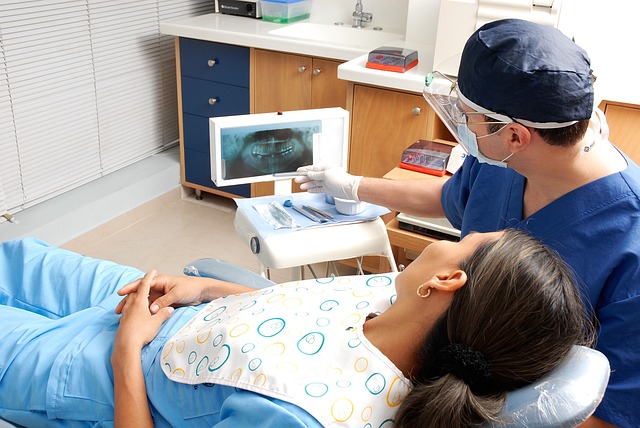Start Medical Assistant Training in the US Today
Start Medical Assistant Training in the US Today and begin developing practical skills used in clinics and medical offices. Learn how to assist with basic procedures handle patient records support healthcare teams and follow protocols in real or simulated medical environments.

Begin Training for Clinical and Office Support
Medical assistant programs are designed to prepare students for the dual nature of the profession. The clinical side involves direct patient care activities such as taking vital signs, preparing patients for examinations, and assisting physicians during procedures. The administrative component includes managing medical records, scheduling appointments, and handling insurance paperwork.
Most accredited programs offer comprehensive training in both areas, ensuring graduates are well-rounded professionals ready to step into various healthcare environments. Programs typically include courses in medical terminology, anatomy and physiology, clinical procedures, and office management—all essential knowledge areas for effective medical assistants.
Learn How to Manage Medical Documentation
Medical documentation is a critical skill for aspiring medical assistants. Training programs place significant emphasis on teaching students how to properly maintain patient records, both in traditional paper formats and through Electronic Health Record (EHR) systems that have become standard in most healthcare facilities.
Students learn the importance of accurate documentation for both patient care and legal compliance. Training covers proper charting techniques, medical coding basics, insurance processing, and confidentiality requirements under HIPAA (Health Insurance Portability and Accountability Act). These documentation skills are particularly valuable as healthcare facilities continue to digitize their operations, making tech-savvy medical assistants highly sought after.
Practice Skills for Patient Interaction
Effective communication is perhaps one of the most important aspects of a medical assistant’s role. Training programs dedicate significant time to developing professional patient interaction skills through role-playing exercises and supervised clinical experiences.
Students learn how to communicate with diverse patient populations, including those with special needs or language barriers. Training covers professional bedside manner, active listening techniques, and strategies for calming anxious patients. Many programs also include cultural competency training to help future medical assistants provide respectful, effective care in our increasingly diverse healthcare system.
Explore Procedures Used in Healthcare Settings
Hands-on procedural training forms the core of any quality medical assistant program. Students practice clinical procedures in laboratory settings designed to simulate real healthcare environments before advancing to externships or clinical rotations.
Common procedures covered in training include:
-
Taking and recording vital signs
-
Performing phlebotomy (blood draws)
-
Administering injections
-
Assisting with minor surgical procedures
-
Performing electrocardiograms (EKGs)
-
Conducting basic laboratory tests
-
Proper sterilization and infection control techniques
-
Wound care and dressing changes
This practical experience ensures graduates are prepared to seamlessly integrate into clinical workflows upon employment.
Study in a Structured Medical Program
Medical assistant training is available through various educational pathways. Certificate and diploma programs typically take 9-12 months to complete, while associate degree programs require approximately two years. When selecting a program, accreditation is a critical factor to consider.
Programs accredited by either the Commission on Accreditation of Allied Health Education Programs (CAAHEP) or the Accrediting Bureau of Health Education Schools (ABHES) meet established quality standards and prepare students for certification exams. Most employers prefer or require certification from organizations such as the American Association of Medical Assistants (AAMA) or the National Healthcareer Association (NHA).
Medical Assistant Training Options and Costs
Medical assistant training varies in cost depending on the program type, location, and institution. Students should carefully compare options to find the best value for their educational investment.
| Program Type | Average Duration | Approximate Cost Range | Program Features |
|---|---|---|---|
| Certificate/Diploma (Community College) | 9-12 months | $2,500-$10,000 | Focused curriculum, faster entry to workforce |
| Associate Degree | 18-24 months | $10,000-$25,000 | More comprehensive education, general education credits |
| Technical/Vocational School | 9-12 months | $6,000-$15,000 | Hands-on training focus, potential job placement assistance |
| Online Programs | 4-12 months | $1,200-$15,000 | Flexible scheduling, potential for self-paced learning |
Prices, rates, or cost estimates mentioned in this article are based on the latest available information but may change over time. Independent research is advised before making financial decisions.
Additional expenses may include textbooks, uniforms, certification exam fees, and immunizations required for clinical rotations. Many programs offer financial aid options, and some employers provide tuition reimbursement for employees seeking medical assistant certification.
Preparing for a Rewarding Healthcare Career
Medical assistant training provides an accessible entry point into the healthcare industry with promising career prospects. The U.S. Bureau of Labor Statistics consistently projects faster-than-average growth for medical assistant positions, making it a stable career choice with opportunities for advancement.
After completing training and obtaining certification, medical assistants can pursue specialized roles in areas like pediatrics, dermatology, cardiology, or orthopedics. Some use their experience as a stepping stone to other healthcare careers such as nursing, physician assistant programs, or healthcare administration. The foundation built during medical assistant training serves as an excellent introduction to healthcare delivery systems and patient care principles that benefit professionals throughout their healthcare careers.
This article is for informational purposes only and should not be considered medical advice. Please consult a qualified healthcare professional for personalized guidance and treatment.




